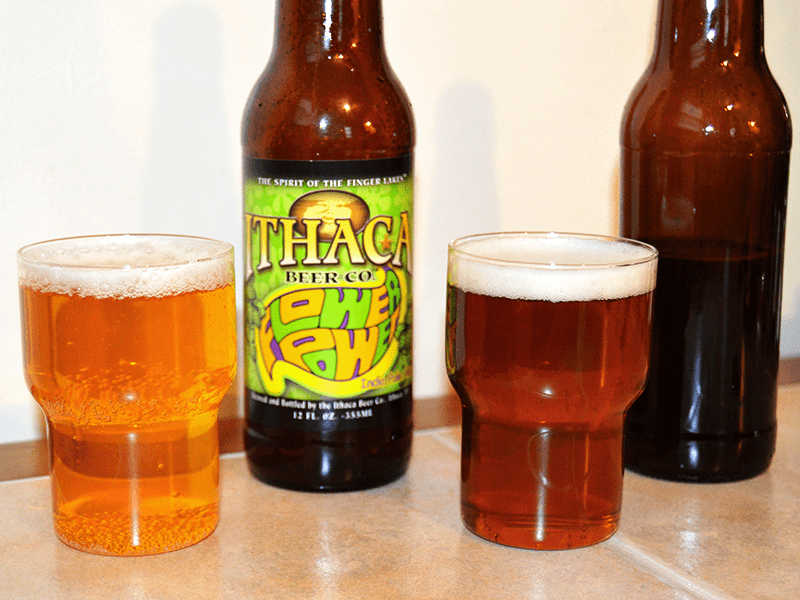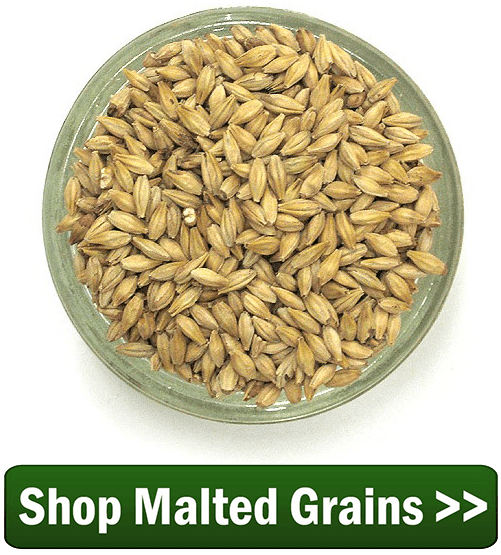 I’ve got to tell you, this Flower Power IPA clone has really come into its own over the past few weeks. The somewhat harsh, alcoholic bite that I noticed in the initial tasting has completely gone away, leaving behind a lush, citrusy hop flavor that’s damn near irresistible. I’ve recently had a few IPAs from the store (from major American craft brewers, no less) that don’t stand close to this brew. It just goes to show that it is possible to make better beer than you can buy.
I’ve got to tell you, this Flower Power IPA clone has really come into its own over the past few weeks. The somewhat harsh, alcoholic bite that I noticed in the initial tasting has completely gone away, leaving behind a lush, citrusy hop flavor that’s damn near irresistible. I’ve recently had a few IPAs from the store (from major American craft brewers, no less) that don’t stand close to this brew. It just goes to show that it is possible to make better beer than you can buy.
In addition to the development in flavor, there has also been a big change in the appearance of the beer. In my initial taste test about two weeks after kegging and bottling, both the kegged and bottled beers showed some serious haze. The kegged beer gradually became clearer as it was consumed, and with a little extra time, the bottled beer became clear as could be, as long as I avoided pouring the sediment into the glass.
Regrettably, I finished off the kegged portion of the Flower Power clone before getting a final photo, but I’ve got some bottles stashed away and one more bottle of the original Flower Power IPA for a final side-by-side comparison. Here are my tasting notes:
- Aroma – Both burst with fresh, American hop aroma. The original Flower Power has more of a malty, sweet honey aroma.
- Appearance – Both clear, with a decent white head. The clone has somewhat more head retention than the original. Original is golden straw in color, while the clone is more of a bright orange.
- Flavor – For all intents and purposes, they are identical. It’s hard to pick out differences when the hops just sit on your palate.
- Mouthfeel – Both are medium-full bodied, carbonation is good. Bitterness doesn’t linger too much.
- Overall – Aside from the color, the clone is nearly spot on. A wonderful IPA in its own right.
Flower Power Clone Recipe Adjustments
Don’t get me wrong – this clone is awesome just the way it is. But if I wanted to make a perfect clone of the Flower Power IPA, how would I change the beer recipe to make it more accurately resemble the original version of the beer?
When adjusting a beer recipe, it’s important not to make too many drastic changes all at once. Instead, focus on just one or two areas and make incremental adjustments. This will make it easier to keep track of what changes have what effect on the beer. After all, the beer is close – we don’t need to reinvent it, just tweak it a little.
That said, the biggest “fault” is the color. To fix that, I would make the following adjustment:
- Grain bill – The clone is too dark. In the original beer recipe, the grain bill is 14.5 lbs. Weyerman pale malt and 1 lb. honey malt, with an estimated color of 9 SRM. I’d consider switching the base malt from a pale ale malt (3˚L) to a 2-row brewers malt (1.8˚L) and possibly reduce the honey malt to .75 lb. to get the color closer to 7 SRM. To maintain a malty sweetness (which is where I think the original really stands out), I’d make sure to keep the mash temperatures on the high end, maybe 154˚F.
Conclusion
This has been a fun experiment in recipe development. Though the first attempt at this Flower Power clone wasn’t a perfect match, I’ve stumbled across an amazing IPA recipe in the process. Best of all, I feel that I’ve really proven to myself that yes, you can make better, fresher beer at home than what you can buy at the store.
What beer would you like to see cloned on the E. C. Kraus Homebrew Blog?
—————————————————————–
Review the whole Flower Power clone brewing process below:
- Part 1: Developing a Recipe
- Part 2: Brewing Water Adjustments
- Part 3: Brew Day
- Part 4: Primary Fermentation Mishaps
- Part 5: Bottling & Kegging
- Part 6: A Conditioning Taste Test
- Part 7: Final Side-by-Side and Recipe Edits
—————————————————————–
David Ackley is a beer writer, homebrewer, and self-described “craft beer crusader.” He holds a General Certificate in Brewing from the Institute of Brewing and Distilling and is founder of the Local Beer Blog.

Just read this series of posts in sequence, and in my opinion you might want to re-think your approach to how to obtain the hoppy sweetness of Ithaca’s Flower Power.
When I attempt to brew this style of beer, i shoot for an OG of 1.068 to 1.070 and a final gravity of 1.010-1.012. While the commercial beer might finish a little higher than that, I’d be suprised if it finished higher than 1.014. Did you take a hydrometer reading of the commercial beer?
By using a lower OG and FG you can end up with a drier beer that leaves more room for the hops to shine, which is really the focus of Flower Power. The perception of sweetness comes from the Honey Malt (I like 4 to 8 oz in 5 gal of IPA) and the delicate balance of the malts and the hop bitterness/hop flavor.
I currently have this in the primary and almost ready for the secondary. I ended up with an OG of 1.068-1.070 and I’m at 1.010 now, so it’s fair to say it’s done fermenting. I’ll be dry-hopping the same as you did, so I’m interested to see how close the flavor, dryness and overall beer is to the original.
My one fault was that my terminator fridge was out of order, so my fermentation temp fluctuated between 65-75F, so I’m hoping for no off flavors.
Chris – let us know how it turned out! Cheers!